Margot Note's Blog, page 40
June 4, 2018
How to Write a Thesis Statement
A thesis statement is a sentence declaring what your essay is going to contain. It proposes the position you are going to argue for in your paper. It presents the topic of your writing and also comments on your position on the issue. Your thesis statement provides a roadmap for you as you write your paper, and it also helps your reader follow your argument as it develops. It lets your reader have an easier time understanding your argument.
Your thesis statement should come at the beginning of your paper, usually near the end of your introduction.
A good thesis statement has several characteristics:
It asserts your point of view. A thesis statement expresses a position and sets up the rest of the essay to convince the reader that point of view is correct. It makes a promise to the reader about the scope, purpose, and direction of your essay.It justifies discussion. A thesis statement claims that others may disagree with it and is therefore worth debating. A thesis that states the obvious is boring and doesn’t allow you to develop an argument. Life is too short for limp thesis statements!It expresses a single main idea. Limiting your thesis statement to a single idea makes your paper easier to follow and understand. It’s easier to develop a paper around a central, sole idea than around a complex one.Developing a thesis statement takes time. To develop a thesis statement start with a topic that interests you, and work toward narrowing it down as you research. Consider if you have enough evidence to support your argument. It may take several iterations before you find a specific thesis statement that you can support.
When you have a glimmer of a thesis statement in mind, gently ask yourself, “So what?” Continue to query yourself. “How might answering this question help us understand something important? I wonder who might be interested in seeing this question answered. How might it change their thinking?”
I find, for myself and my students, that we can begin writing with a thesis statement in mind, and we refine it as we continue writing. In an ideal world, you would determine the thesis statement first then outline your argument. However, I think many scholars figure out the nuances of their case as they write and research. Often, I start with a half-baked thesis statement and find that the statement becomes clear as I complete my first draft. Remain flexible as you write because your thesis may change as you develop your paper.
Once you have a draft, go back and check to see if your thesis summarizes the paper you have already written. If not, be open to the idea of adjusting the thesis to bring it in line with the content of the paper. You may need to go through the process more than once as you refine your argument.
A strong thesis statement reflects strong ideas. It signals a writer who has intelligence, commitment, and enthusiasm and who also presents a unique point-of-view.
Follow me on Pinterest | Instagram | Twitter | LinkedIn |
Like this post? Never miss an update when you sign up for my newsletter:

May 28, 2018
Finding Time for Self-Care
No matter who you are or what you do, you need to be kind to yourself. When I teach a class on research methods to my students, I incorporate a section on self-care for scholars into lesson. Audre Lorde stated, "Caring for myself is not self-indulgence, it is self-preservation, and that is an act of political warfare." How true she was!
To feel prepared and vibrant for work, for school, and for life, we need to take time for ourselves before we start taking care of others. Caring for ourselves physically, mentally, and emotionally can help anchor us in the present moment. This means we bring our best self to work each day.
Integrating self-care practices into our daily routines takes purposeful planning. The bottom line is that you have to want to make wellness a high priority in your life. Self-case isn't selfish; it's selfless. We are better equipped to serve others when we have invested the time to learn how to best care for ourselves.
Self-care practices don't have to be elaborate or expensive. Most of them are quick and free. Here are some suggestions:
Take a nap. Read a book for fun. Play games, either physical or digital.Meditate.Do a body scan. This Mindfulness-Based Body Scan is one of my favorites. Take a bath or shower.Call a friend or family member.Give yourself more time to complete a project or commute somewhere. Don't rush.Go to bed early or sleep in. Say no to something. Or a lot of things. Do something sexy/sensual/sexual with yourself or a partner. Drink something soothing, like Calm, Tulsi tea, or your favorite beverage. Turn off all notifications. Unsubscribe and unfollow accounts that no longer serve you.Take a Mental Health Day.Develop a relaxing evening ritual. Make a playlist to match your current mood. Try 4-7-8 breathing. Visit a library or bookstore. Exercise.Take a yoga class. Take a walk. Clean your desk or work area. Order in or cook something new. Pamper yourself with a beauty ritual.End work early or start work late.Light candles, burn incense, or use an essential oil diffuser.Watch your favorite film. Spend time with someone. Pray.Ask for help with something that you're struggling with.What self-care practices do you use? I'd love to read your comments.
Follow me on Pinterest | Instagram | Twitter | LinkedIn | Facebook
May 21, 2018
Discover Your Learning Styles
One of the best ways to improve your research methods or academic performance is to discover your learning styles. Some people favor a particular way of learning, while others find that a blend of techniques work best for them. I've also found that learning styles can change over time; what may have worked with you while you were in school, for example, may shift when you are learning in a professional environment.
Each learning style uses different sections of the brain. The most effective learning styles engage many parts of the brain at the same time. Mix your styles to discover what works best for you. Adapt your learning styles to suit whatever works best for you.
Here are some typical learning styles:
AuralAural learners tend to play musical instruments or enjoy singing. They learn best through active listening, by taking part in discussions, attending lectures, or by listening to educational recordings. They tend to read their notes out loud, record work as notes to play to themselves, and want to pair up with a friend to study.
You may be an aural learner if the following questions resonate with you:
Are you good at singing and/or do you play a musical instrument?Do you remember songs easily?Do you notice music playing the background of films and other media?Do you use rhymes or rhythms to remember thingsDo you dislike silence and prefer to have music playing in the background?LogicalThese learners are good at math and work through problems. They recognize patterns and links between themes, and can group together related pieces of information. They tend to make lists of things to do, ranking them in order.
You may be a logical learner if the following questions resonate with you:
Do you recognize patterns and see connections easily?Are you good at math and science?Do you work through problems in a logical way?Do you like making lists of things to do and putting items in order?Do you enjoy brain-teasers and games like sudoku or chess?PhysicalPhysical learners like being active and find it helpful to think through problems while exercising. To learn how something works, they would prefer to take it apart than read the instructions. They are hands-on learners. They are more likely to copy out their notes, move around the room while reviewing, and want to try out different places where they might work of study.
You may be a physical learner if the following questions resonate with you:
Do you enjoy sports and physical activities?Are you skilled with your hands, or enjoy crafts?Do you enjoy fixing things and taking things apart to see how they work?Do you find it hard to sit still for long periods of time?Do you find that exercising or doing physical activity helps you think things through?VerbalVerbal learners are comfortable expressing themselves through speech and writing. They are avid readers, with good vocabularies. Verbal learners benefit from learning by using their speaking and writing skills.
You may be a verbal learner if the following questions resonate with you:
Do you find it easy to express yourself verbally and through writing?Do you love reading and read all kinds of things?Do you enjoy word games, crosswords, or puns?Do you have a good vocabulary and like to use new words?Are you good at explaining things to people?VisualVisual learners have good spacial awareness and enjoy drawing. They are the doodlers in class! These leaners use pictures, mind-maps, and diagrams to organize information and plan their tasks, and use color-coding to highlight different themes. They rewrite notes and draw sketches to jog their memories.
You may be a visual learner if the following questions resonate with you:
Do you like using mind-maps with colors and pictures?Do you draw diagrams to see the links in processes?Do you have a good sense of direction and find it easy to use maps?Is it easy to visualize objects and plans in your head?Do you enjoy drawing and doodling?I learn best using a mix of logical and verbal. I love to do lists and writing notes as I learn.
What are your learning styles?
Follow me on Pinterest | Instagram | Twitter | LinkedIn |
Like this post? Never miss an update when you sign up for my newsletter:

May 15, 2018
Letter #27: Paper Kisses
I'm continuing my series of scanning, transcribing, and annotating my grandfather's love letters to my grandmother leading up to their marriage in June 1940. The letters are chronologically organized and preserved, using the methods I discuss in detail in my book, Creating Family Archives: How to Preserve Your Papers and Photographs.
In the 27th letters in the Grandpa's Love Letters series, Grandpa discusses the plans for their upcoming nuptials--which is only a month away. They need to find a new, furnished apartment in Scranton, buy a gift for their friends getting married, figure out how many people are attending, send out the invites, and get Grandma's ring.
[image error]
"Ann" is written on the back. This was taken out of a scrapbook so I date it to be around the mid-1930s.
The jeweler's name is Ernie, underlined and in quotes, which makes it sound like it's an alias! I have both Grandma's engagement ring, a 14K white gold band with a small pearl, and a simple 14K white gold wedding band. I'm wearing them as I write this!
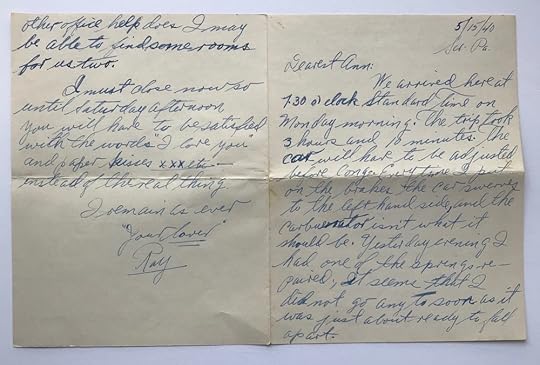
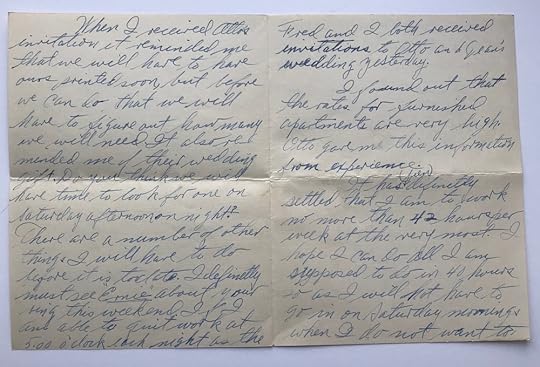
***
5/15/40
Scr. Pa.
Dearest Ann:
We arrived here at 7.30 o'clock Standard time on Monday morning. The trip took 3 hours and 10 minutes. The car will have to be adjusted before long. Every time I put on the brakes the car swerves to the left hand side, and the carburetor isn't what it should be. Yesterday evening, I had one of the springs repaired. It seems that I did not go any to [sic] soon as it was just about ready to fall apart.
Fred and I both received invitations to Otto and Jean's wedding yesterday.
I found out that the rates for furnished apartments are very high. Otto gave me this information from experience.
It has (been) definitely settled that I am to work no more than 42 hours per week at the very most. I hope I can do all I am supposed to do in 40 hours so as I will not have to go in on Saturday mornings when I do not want to.
When I received Otto's invitation, it reminded me that we will have to have ours printed soon, but before we can do that we will have to figure out how many we will need. It also reminded me of their wedding gift. Do you think we will have time to look for one on Saturday afternoon or night? There are a number of other things I will have to do before it is too late. I definitely must see "Ernie" about your ring this weekend. If I am able to quit work at 5.00 o'clock each night as the other office help does I may be able to find some rooms for us two.
I must close now so until Saturday afternoon you will have to be satisfied with the words "I love you" and paper kisses XXX etc. instead of the real thing.
I remain as ever
"Your lover"
Ray
***
Creating Family Archives: How to Preserve Your Papers and Photographs
By Margot Note
If you like archives, memory, and legacy as much as I do, you might consider signing up for my email list. Every few weeks I send out a newsletter with new articles and exclusive content for readers. It’s basically my way of keeping in touch with you and letting you know what’s going on. Your information is protected and I never spam.
Ready to get started creating your family archives? Here are some of my favorite products:
Follow me on Pinterest | Instagram | Twitter | LinkedIn | Facebook
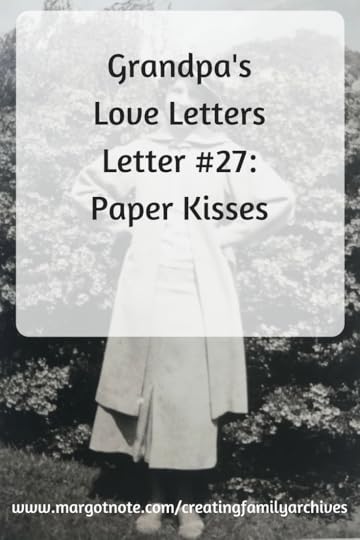
May 14, 2018
9 Ways to Evaluate Credible Websites
When you're conducting research online, it may be difficult to determine if a website contains credible information. Almost anyone can publish anything online, which provides a wealth of information for scholars and students. However, the ease of publication may promote information which is false, faulty, or misleading. When evaluating websites for credibility, ask yourself the following questions:
Who is the author? Is his or her identity clear? What are his or her credentials?What organizations are they affiliated with, and are they credible? Can you find additional information about the author from other websites?Does the author provide evidence for his or her assertions? Are their sources up-to-date and available? Does he or she list citations or a bibliography? Where are their sources for the statistics they use?Is the site affiliated with an academic institution, organization, journal, or group? Does the URL contain .gov, .edu, or .org? Does the site have an About page so that you can read the mission statement? What point-of-views or biases might the organization have?What is the purpose of the site? Does it educate, persuade, or sell anything? Does it contain advertising? If so, how might advertising affect the website's content?Do you know when the website was last updated? Is the web page recent?Does the information on the site concur with what you have learned about the subject from other sources? If not, what surprises you about the information you learned? Does the site contain links to other sites? Are the linked sites affiliated with reputable organizations or people?What tips do you use when evaluating web sources? Comment below, and share your strategies.
Follow me on Pinterest | Instagram | Twitter | LinkedIn |
Like this post? Never miss an update when you sign up for my newsletter:

May 7, 2018
Thanatopsis: Seeing Death with Postmortem Photographs
I presented this paper at "The Art of Death and Dying" symposium on October 24-27, 2012. The symposium was hosted by the University of Houston Libraries, in partnership with the Blaffer Art Museum, the Cynthia Woods Mitchell Center for the Arts, the Department for Hispanic Studies, the Honors College and School of Art. Far from being morbid, this was the best, most well-planned, and liveliest symposium I've ever attended. (Soon afterward, I was contacted to be interviewed for a Norwegian docu-series on death, which is just as awesome and metal as it sounds).
Barthes termed photography flat death; Sontag called it soft death; Derrida deemed it “the art of ghosts, a battle of phantoms.” From its inception, photography has embraced death, as it embalms forever what it has captured momentarily. No better period was this exemplified than in the Victorian era, when bereavement became an art in itself. Postmortem photographs of the deceased by themselves or with family members became a universal practice. As a nascent technology in an era of high mortality rates, photography provided an emotionally satisfying means to “secure the shadow, ere the substance fade,” as the popular slogan for photographic studios read.
Taking its title from William Cullen Bryant’s famous poem, from the Greek words thanatos (“death”) and opsis (“sight”), this paper explores how a twenty-first century audience “sees death” with memorial photography. Through blogs, Tumblr posts, and Twitter feeds and an escalation of eBay auctions and Etsy sales, nineteenth century postmortem photographs have become a macabre spectacle not only because of their morbidity and beauty, but also because of a modern fascination with elaborate mourning customs no longer practiced today. As carriers of the past, postmortem photographs fascinate viewers because they represent the authentic in an ever more mediated environment and retain the aesthetic of the physical photograph in a world of born-digital media.
Delving deeper into this pictorial practice, one discovers that remembrance photography’s alliance with the Victorians overlooks its occurrence in tandem with the establishment of photography around the world. More importantly, postmortem photography’s association with a specific period undervalues the extent in which this genre persists in contemporary visual culture. Rather than a past phenomenon, the pictorial representation of death lives on in the present as the grief-stricken continue to use photography to mitigate mortality.
May 6, 2018
Letter #26: Consent to Our Marriage
I'm continuing my series of scanning, transcribing, and annotating my grandfather's love letters to my grandmother leading up to their marriage in June 1940. The letters are chronologically organized and preserved, using the methods I discuss in detail in my book, Creating Family Archives: How to Preserve Your Papers and Photographs.
In the 26th letter in the Grandpa's Love Letter series, Grandpa prepares for another weekend home. During the visit, he is going to ask Grandma's parents for her hand in marriage.
In the letter, he mentions his brother Charles and his sister, Lena. They are pictured below in a cabinet card that I'm dating to be from around the 1920s. A cabinet card was a style of photograph which was widely used for portraiture after 1870. It consisted of a thin photograph mounted on a card typically measuring 4-1⁄4 by 6-1⁄2 inches. It looks like there's a cow or horse in the upper right-hand section of the photograph.
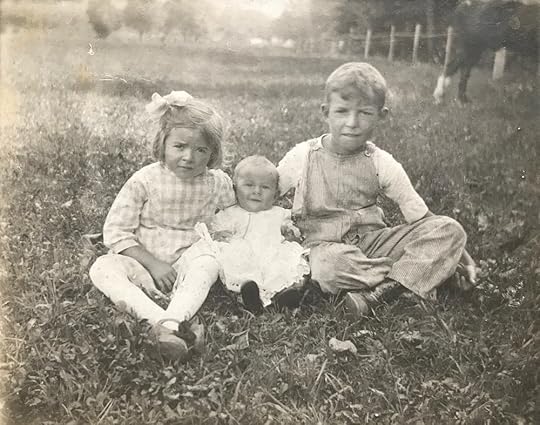
Lena, Charles, Emil


***
5/6/40
Scranton Pa.
Dearest Ann:
I hope you had a good time at the "May Ride." You had a very nice day for it. You did not tire yourself out too much, did you?
Charles asked me Sunday if I was coming home this coming Saturday, when I told him yes he said if it was alright with us he would go out with us and Veronica on Saturday so as they could become acquainted before the wedding. Try to give me an answer soon so I can tell him if it alright.
If think we will have to take the train home this weekend because Otto's car has two broken sprints. I am writing home ["this weekend" is crossed out] and telling them that I will have to have the car from now on.
I spent a very quiet day yesterday. I got up at 10 o'clock went to the 12 o'clock mass and after eating dinner I packed some of my belonging away n the trunk we have at home. At about six oclock I went down to see the Lena and Mart and stayed for an hour then I went to see the Regent. I enjoyed both pictures ("Pinocchio" and "Too Many Husbands"). I didn't waste much time getting home and getting to bed as I got up at 4.45 this morning.
We can expect to be very busy this week-end, what with buying our luggage going out at night, etc. You may wonder what the etc. is. Well if I don't weaken I want to ask your parents for their consent to our marriage.
I can not think of anything else to write now except that I love you more than ever.
Best wishes and regards to all.
Your "Sweetheart"
Ray
***
Creating Family Archives: How to Preserve Your Papers and Photographs
By Margot Note
If you like archives, memory, and legacy as much as I do, you might consider signing up for my email list. Every few weeks I send out a newsletter with new articles and exclusive content for readers. It’s basically my way of keeping in touch with you and letting you know what’s going on. Your information is protected and I never spam.
Ready to get started creating your family archives? Here are some of my favorite products:
Follow me on Pinterest | Instagram | Twitter | LinkedIn | Facebook

April 30, 2018
An Interview on An Archivist's Tale
Archival power couple Geof Huth and Karen Trivette interviewed me on the podcast An Archivist's Tale.
In the interview, we discussed how my life changed dramatically and how I became empowered by learning to be comfortable with being uncomfortable. "Bravery is Impossible Without Terror" is the title. It's apt!
I've written several posts about my career path, especially its twists and turns. Some reader favorites include:
How to Thrive in Self-Employment
Self-Employment Success Strategies
One of my proudest achievements has been to take an otherwise negative event like being laid off and to see it as the true gift that it was. I wouldn't be here now without having that happen to me.
I'll let the interview speak for itself:
Listen to "Episode 4: Bravery is Impossible without Terror (Margot Note)" on Spreaker.Follow me on Pinterest | Instagram | Twitter | LinkedIn | Facebook
April 25, 2018
Letter #25: Confession on Saturday
I'm continuing my series of scanning, transcribing, and annotating my grandfather's love letters to my grandmother leading up to their marriage in June 1940. The letters are chronologically organized and preserved, using the methods I discuss in detail in my book, Creating Family Archives: How to Preserve Your Papers and Photographs.
In the 25th letter of the Grandpa's Love Letter series, life's little annoyances get in the way. It's funny how looking back at this letter so many years later, the problems seem so minuscule in the grand scheme of things. It allows me to put the minor inconveniences of my own life in perspective. Problems at work, headaches from glasses, moving, finding new apartments, and a landlady who no longer wants to do your laundry: it doesn't sound like fun for Grandpa. He probably has a number of sins to confess on Saturday too!
(Sidenote for Catholics: Wasn't Saturday night mass so much more fun and seemed to go by quicker than Sunday morning mass? The priest probably had plans afterward, as did the parishioners, so it seemed like the mass was a quick, informal 45 minutes. Sit, stand, kneel; a little acoustic guitar; communion; and buh-bye! It felt freeing to have church crossed off your weekend to do list and have Sunday free all day!)
A big "oof!" to the Chinaman comment. As always, I'm trying not using presentism (the uncritical adherence to present-day attitudes, especially the tendency to interpret past events in terms of modern values) but goodness gracious. As white people, we've come a long way from latent (and not so latent) racism, but we still have so much further to go. In the future, I'd like to write a post about white privilege and racism in family archives, but I still need time to process my thoughts about the matter.
On a different note, here's a delightful picture of my grandmother and step-brother from the early 1940s. Don't they look cute?
[image error]
Grandma wrote on the back: "Joe Zabit and Ann Note."
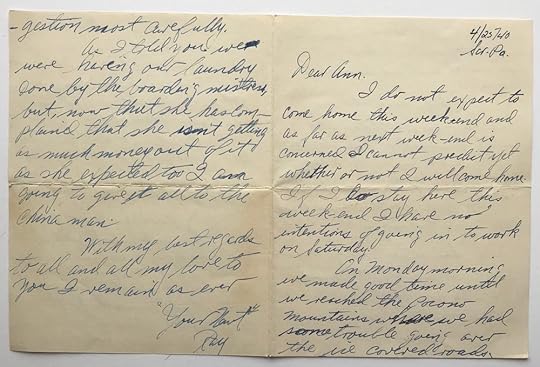
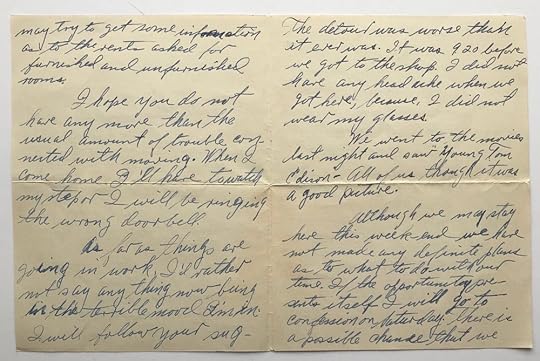
***
4/25/40
Scr. Pa.
Dear Ann.
I do not expect to come home this weekend and as far as next week-end is concerned I cannot predict yet whether or not I will come home. If I do stay here this week-end I have no intentions of going in to work on Saturday.
On Monday morning we made good time until we reached the Pocono Mountains where we had some trouble going over the ice covered roads. The detour was worse than it ever was. It was 920 before we got to the shop. I did not have any headache when we got here, because, I did not wear my glasses.
We went to the movies last night and saw "Young Tom Edison." All of us though [sic] it was a good picture.
Although we may stay here this week-end we have not made any definite plans as to what to do with our time. If the opportunity presents itself I will go to confession on Saturday. There is a possible chance that we may try to get some information as to the rents asked for furnished and unfurnished rooms.
I hope you do not have any more than the usual amount of trouble connected with moving. When I come home, I'll have to watch my step or I will be ringing the wrong doorbell.
As far as things are going in work, I'd rather not say anything now being in the terrible mood I'm in. I will follow your suggestion most carefully.
As I told you we were having our laundry done by the boarding mistress, but now that she had complained that she isn't getting as much money out of it as she expected too [sic] I am going to give it all to the Chinaman.
With my best regards to all and all my love to you I remain as ever
"Your Newt"
Ray
***
Creating Family Archives: How to Preserve Your Papers and Photographs
By Margot Note
If you like archives, memory, and legacy as much as I do, you might consider signing up for my email list. Every few weeks I send out a newsletter with new articles and exclusive content for readers. It’s basically my way of keeping in touch with you and letting you know what’s going on. Your information is protected and I never spam.
Ready to get started creating your family archives? Here are some of my favorite products:
Follow me on Pinterest | Instagram | Twitter | LinkedIn | Facebook
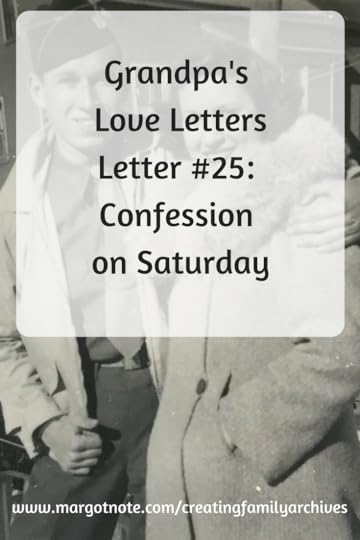
April 23, 2018
Instagram for Archives
Instagram is a powerful tool to introduce your archival collections to the public through images. It also allows your constituents to see parts of collections that they might not usually see because of security or preservation reasons. Viewers can experience your storage areas, your conservation room, or rare items that are rarely displayed.
Don’t underestimate how the everyday processes of archives are interesting to those outside the field. I remember watching an Insta-story of an archives as they demonstrated their pest control activities. Who would ever think that would be engaging? But it was! To people who don’t know about archives, libraries, or museum work, the quotidian aspects of the job can demonstrate how much care and protection is needed to preserve their cultural heritage.
Instagram also allows you to engage one of one with your audience. People can ask questions, and you can educate and entertain through comments. Use a little humor and humanity to talk directly to your followers.
In my Instagram account, I try to balance pictures of my work with clients, as well as well as my personal life. I've also documented archival practices, like sorting and organizing a zine collection, in my Instastories.

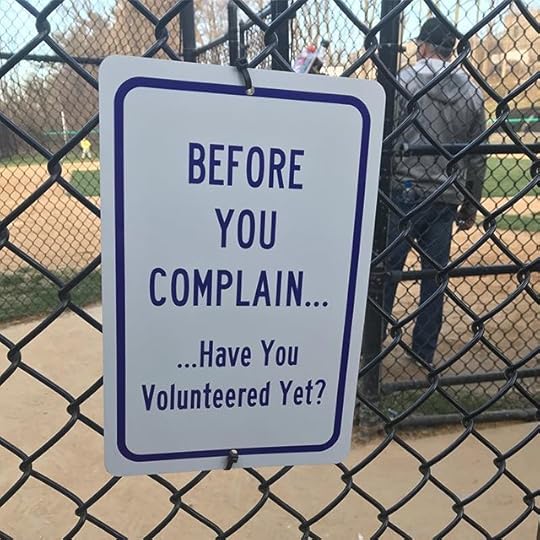

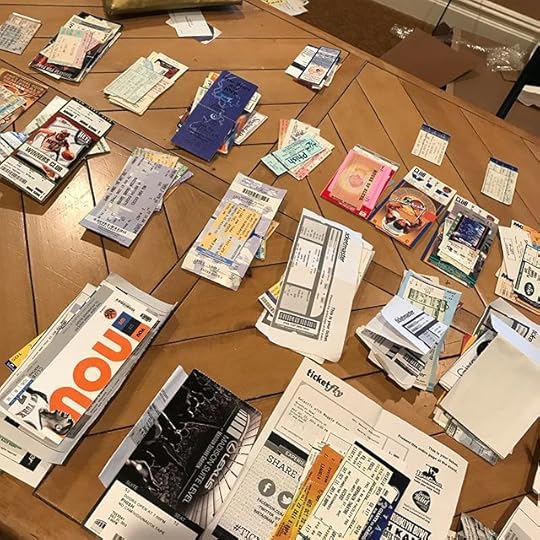
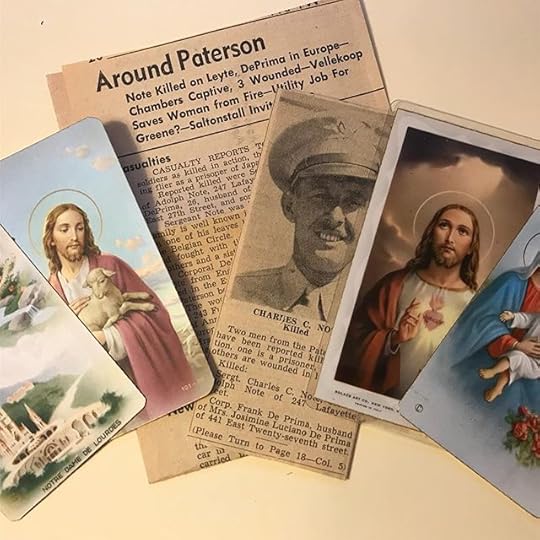
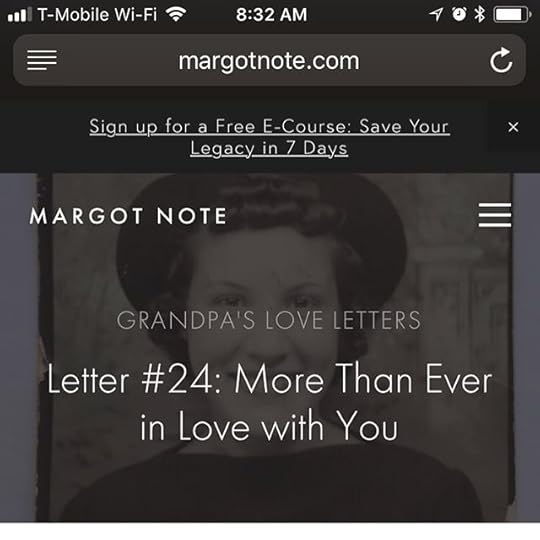
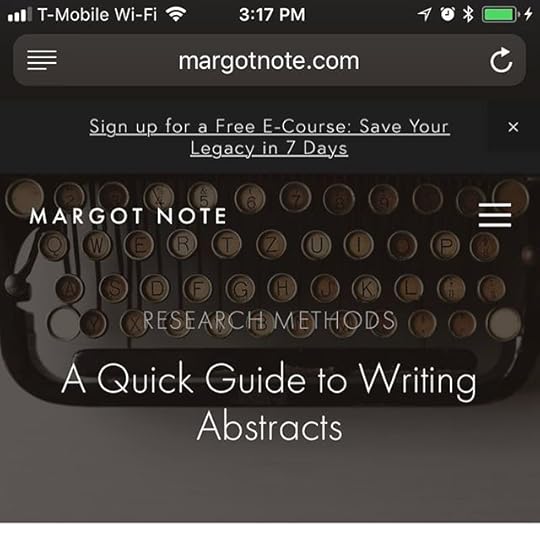
The informality of social media makes it easy to forget that they are not private spaces. Data protection and copyright laws still apply, and social media inputs are visible to search engines. Make sure that you are sharing information that is okay for everyone to know about and never criticize or act unprofessionally while posting.
Despite Instagram’s power, it can be a hard sell to get approval to start an account. It may be a generational thing, as Instagram tends to appeal to a younger audience, and executives and board members might not use it themselves. At a past job, I fought to set up and run the Instagram account. It was satisfying to see the follower and comment count growing and to hear that the account was praised at professional conferences.
To learn more about how to set up and run a successful Instagram account for an archives, read my chapter, "#CulturalHeritage: Connecting to Audiences Through Instagram” in Engagement and Access: Innovative Approaches for Museums, edited by Juilee Decker.
Engagement and Access: Innovative Approaches for Museums
Rowman & Littlefield Publishers
What are your favorite archive-based Instagram accounts?
Like this post? Never miss an update when you sign up for my newsletter:
Follow me on Pinterest | Instagram | Twitter | LinkedIn | Facebook



